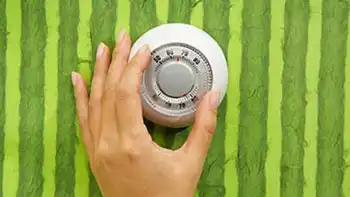Union blames outage response on cutbacks
By Albany Times-Union
Protective Relay Training - Basic
Our customized live online or in‑person group training can be delivered to your staff at your location.

- Live Online
- 12 hours Instructor-led
- Group Training Available
"That's one reason why we don't respond like we did - the lack of experience at the top," said David Falletta, president of the International Brotherhood of Electrical Workers Local 97, which represents 3,500 National Grid workers. "All the utilities are suffering from the same problems."
About 213,000 National Grid customers across the state lost power in the storm, which delivered gusts reaching more than 70 mph. As of February 21 4,800 customers were still without electricity, mostly in Saratoga and Warren counties.
Like other utilities across the country, National Grid has reduced the number of workers it employs - including linemen trained to repair power lines and equipment - over the past decade as it sold off its power-generation assets due to energy deregulation. Under the new business model, utilities rely more on contractors and neighboring utilities for repairs, especially in the aftermath of severe storms.
For example, National Grid employs about 740 linemen across the state, down from a peak of 1,500 during the 1980s.
The company said it was using 1,200 field workers and 300 support staff to respond to the storm damage, but that half of those workers were contractors or employees of neighboring utilities such as Consolidated Edison Inc.
Officials from National Grid, IBEW and the industry said electric utilities as a whole are facing a major challenge as its older, more experienced linemen retire.
"The industry has a shortage," said Clem Nadeau, National Grid's senior vice president of operations for New York.
For instance, in National Grid's eastern division, which includes the Capital Region, the number of linemen today is 220, down from 252 a year ago, because of retirements, said Brian Kilgallon, an assistant business manager at IBEW Local 97. He said the company's experienced linemen are much better equipped than contractors to deal with repairs during emergencies because of training and familiarity with the service territory. And a similar number of linemen are expected to retire this year. It can take as long as five to seven years of training to become a qualified lineman, able to do the most sophisticated and dangerous storm repairs, union officials said.
Nadeau said National Grid has been hiring more new linemen than it has been losing to retirement. Linemen make between $25 and $35 an hour before overtime, said National Grid spokesman Alberto Bianchetti. The company is a successor to Niagara Mohawk Power Corp., which was purchased by National Grid plc, a British energy company, in 2002. Jason Cuevas, a spokesman with the Edison Electric Institute in Washington, D.C., a trade group for shareholder-owned electric utilities, said the utilities are facing a "graying of the work force" much like other industries.
"It is an issue that companies across the country are addressing," he said. "It is a long process to bring someone along to get the skills they need to be an effective lineman. It's an ongoing process." The state Public Service Commission said that as of February 21, it had received a dozen complaints from National Grid customers about the response to the storm.
David Flanagan, a spokesman for the PSC, said National Grid is required to submit to the agency an internal performance review of its restoration efforts within 60 days. The report is required for any power outage lasting more than three days.
"It's an opportunity to identify opportunities for improvement," Flanagan said. "Our focus for the last few days has been on the restoration effort and making sure that the necessary work that needs to be done gets done."
Assemblyman Paul Tonko, D-Amsterdam, said he knows about the electric industry's work force problems and plans to continue to study the issue as chairman of the Assembly's energy committee. He believes National Grid is doing the best job it can given the circumstances of the storm. The utility had to ensure the safety of its workers in cold temperatures in addition to getting power back to its customers, Tonko said.
"I was in the eye of the storm, and it was frightening. It was a very difficult task," he said. "I believe they tried as best they could with the conditions being what they are."











